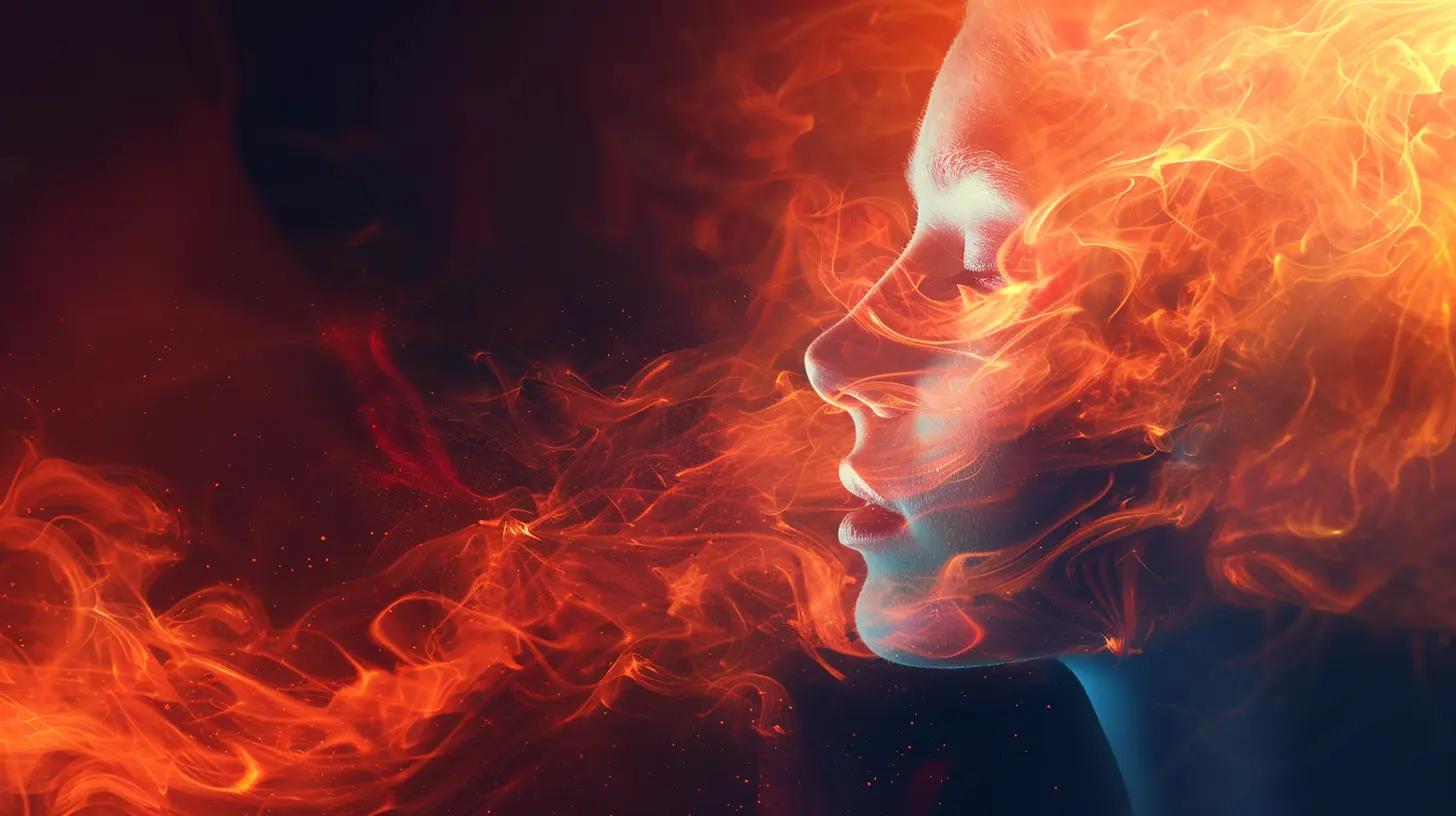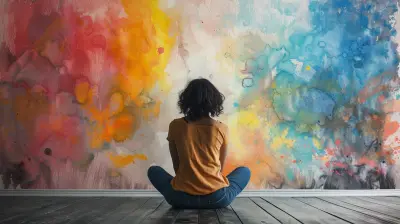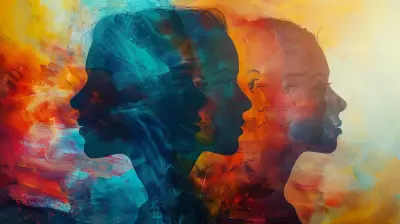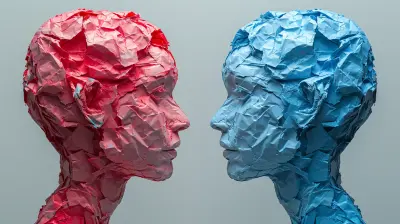24 November 2024
Have you ever been told to "visualize your happy place" during a stressful moment? That’s not just a throwaway suggestion. It’s actually a therapeutic technique known as guided imagery, and it's used to empower individuals by tapping into their inner strength. Guided imagery can be a powerful tool in therapy, helping people manage stress, anxiety, depression, physical pain, and much more. In this article, we’re going to explore what guided imagery is, how it works, and how it can be used in therapy to help people tap into their inner strength.

What Is Guided Imagery?
First off, let’s break it down. Guided imagery is a form of focused relaxation or meditation. It involves using all your senses—sight, sound, touch, taste, and smell—to imagine a scene or situation that feels calming or empowering. The goal here is to mentally transport yourself to a place where you feel safe, secure, and strong. This isn't just daydreaming; it's a structured practice that can have real psychological and physiological benefits.Imagine guided imagery as a mental vacation. Instead of hopping on a plane to a tropical island, you're taking a trip in your mind. But instead of just relaxing, you’re also building resilience, managing emotional pain, and fostering healing. Cool, right?
How Does Guided Imagery Work?
Now, you might be wondering, how can imagining yourself on a beach or in a forest really make a difference? Here’s the thing—your brain doesn’t know the difference between what’s real and what’s imagined. When you picture a peaceful place in vivid detail, your body can actually relax as if you’re physically there. It’s like your brain is being tricked into releasing stress and tension.But that’s not all. Guided imagery also taps into your subconscious mind, where emotions, memories, and inner wisdom are stored. By visualizing healing, strength, or success, you can access deep parts of yourself that may not be accessible through traditional talk therapy alone. It’s like unlocking hidden rooms in your mind that contain resources you didn’t even know you had.
The Science Behind Guided Imagery
If you’re skeptical, I get it. Imagining things to improve mental health sounds a bit too good to be true, right? But there’s actual science that backs it up. Studies have shown that guided imagery can:- Reduce anxiety by lowering cortisol levels, the hormone responsible for stress.
- Alleviate physical pain, especially chronic pain, by shifting focus from discomfort to relaxation.
- Boost the immune system, helping the body to heal more effectively.
- Improve sleep, making it easier to fall asleep and stay asleep.
These benefits happen because guided imagery activates the parasympathetic nervous system, which is responsible for rest and recovery. When this system is engaged, your heart rate slows, your breathing deepens, and your body enters a state of relaxation. It’s like flipping the “off” switch on stress.

Types of Guided Imagery
Not all guided imagery is the same. Depending on your needs, there are different types of guided imagery that can help you tap into specific areas of inner strength. Let’s look at a few common ones:1. Relaxation Imagery
Relaxation imagery is probably the most common form. Here, you're guided to imagine a peaceful scene—maybe a beach, a forest, or even floating on a cloud. The goal is to relax both mentally and physically. This is great for managing stress and anxiety.2. Healing Imagery
Healing imagery is used when someone is dealing with illness, injury, or chronic pain. In this type, you might be guided to imagine the body healing itself. For example, you could picture white blood cells attacking an infection or envision muscles repairing themselves after an injury.3. Performance Imagery
This form of guided imagery is often used by athletes or performers to mentally rehearse success. You might visualize yourself nailing that presentation or crossing the finish line in a race. It’s all about boosting confidence and preparing for success.4. Exploratory Imagery
Exploratory imagery is used to delve deeper into the subconscious mind. The therapist might guide you through scenarios where you meet an inner guide or symbol of wisdom. This can help you tap into emotions or insights you didn’t even know were there. It’s like having a conversation with your inner self.
How Guided Imagery Taps Into Inner Strength
So, how does all this imagery actually help you access your inner strength? It’s simple: your mind is incredibly powerful, and guided imagery helps you harness that power. Let’s break it down:1. Building Resilience
When you visualize yourself handling a stressful situation with grace and strength, you’re training your brain to respond that way in real life. It’s like a mental dress rehearsal. The more you practice, the more resilient you become. Over time, you start to believe in your own strength.2. Accessing Inner Wisdom
We all have an inner voice or gut feeling that guides us, but sometimes it gets drowned out by stress, fear, or self-doubt. Guided imagery helps you reconnect with that voice. By visualizing a wise guide or mentor (real or imaginary), you can access advice and insight from within yourself. It’s like shining a flashlight into the dark corners of your mind.3. Boosting Confidence
When you see yourself succeeding in your mind’s eye, it boosts your confidence in real life. Whether it's overcoming a challenge, healing from trauma, or simply managing daily stress, guided imagery helps you believe that you can handle it. And belief is the first step toward making it a reality.4. Emotional Healing
Sometimes, we hold onto emotional pain because we don’t know how to let go. Guided imagery can help. By visualizing yourself releasing anger, grief, or fear, you can start to process those emotions in a safe and controlled way. It’s like opening a valve to release built-up pressure.5. Physical Healing
There’s a growing body of research suggesting that the mind-body connection is real. By visualizing the body healing itself, you can actually speed up recovery. This isn’t magic; it’s the power of positive thinking combined with the body’s natural ability to heal. Guided imagery helps you tap into that potential.
Using Guided Imagery in Therapy
Now that you know what guided imagery is and how it works, you might be wondering how it’s actually used in therapy. Here’s how a typical session might go:1. Setting the Scene
The therapist will ask you to close your eyes and take a few deep breaths. They’ll guide you through a relaxation exercise to get you in the right frame of mind. Think of this as the warm-up before the main event.2. Imagining the Scene
The therapist will then guide you to imagine a specific scene. This could be a peaceful place, a healing scenario, or even a conversation with your inner guide. They’ll prompt you to engage all your senses—what do you see, hear, smell, and feel?3. Deepening the Experience
As you get deeper into the imagery, the therapist might ask you to explore certain emotions or situations. For example, they might ask you to visualize yourself overcoming a challenge or releasing a negative emotion.4. Returning to Reality
After the guided imagery session, the therapist will bring you back to the present moment. You’ll be asked to reflect on the experience and maybe even journal about it. The goal is to take the insights you’ve gained in the session and apply them to your real life.How to Practice Guided Imagery on Your Own
While guided imagery is often done in therapy, you can also practice it on your own. Here’s a quick guide to get you started:1. Find a Quiet Space: Choose a place where you won’t be interrupted. Dim the lights and get comfortable.
2. Close Your Eyes and Breathe: Take a few deep breaths to relax your body and mind.
3. Choose a Scene: Decide what you want to visualize. Is it a peaceful place, a healing process, or a moment of success?
4. Engage All Your Senses: Imagine the scene as vividly as possible. What can you see, hear, smell, taste, and feel?
5. Stay in the Moment: Spend a few minutes fully immersed in the imagery. Let yourself experience the emotions that come up.
6. Come Back Slowly: When you’re ready, slowly bring your awareness back to the present moment. Take a few deep breaths before opening your eyes.
Final Thoughts
Guided imagery is a simple yet powerful tool that can help you tap into your inner strength. Whether you’re dealing with stress, anxiety, physical pain, or emotional trauma, this therapeutic technique offers a unique way to access your mind’s natural healing abilities. And the best part? You don’t need any special equipment or training to get started—just your imagination.So, the next time you’re feeling overwhelmed or stuck, why not give guided imagery a try? You might be surprised by the strength and wisdom you uncover within yourself.










Solstice Riley
Imagining strength—therapy's secret superhero cape!
February 6, 2025 at 5:38 PM